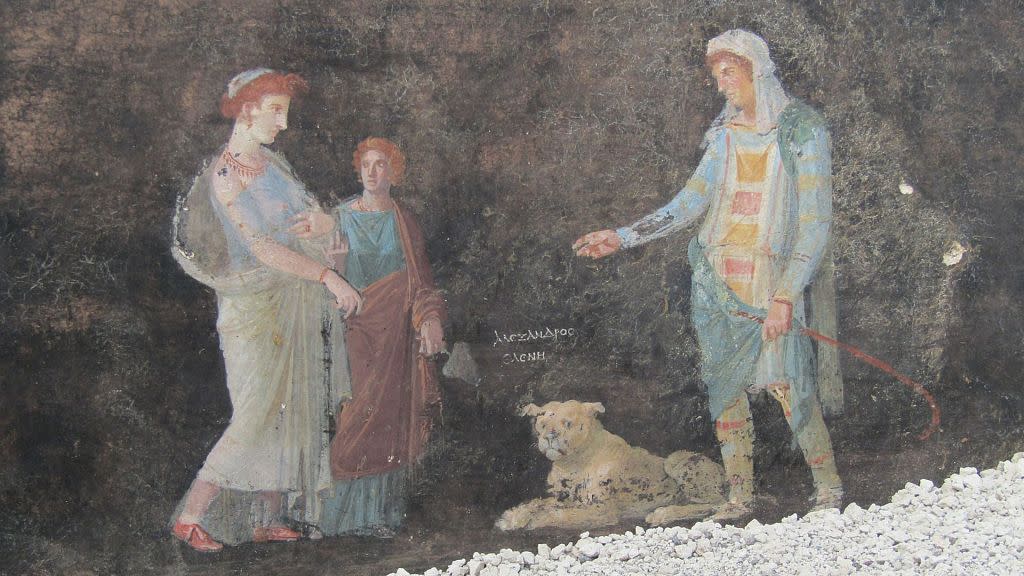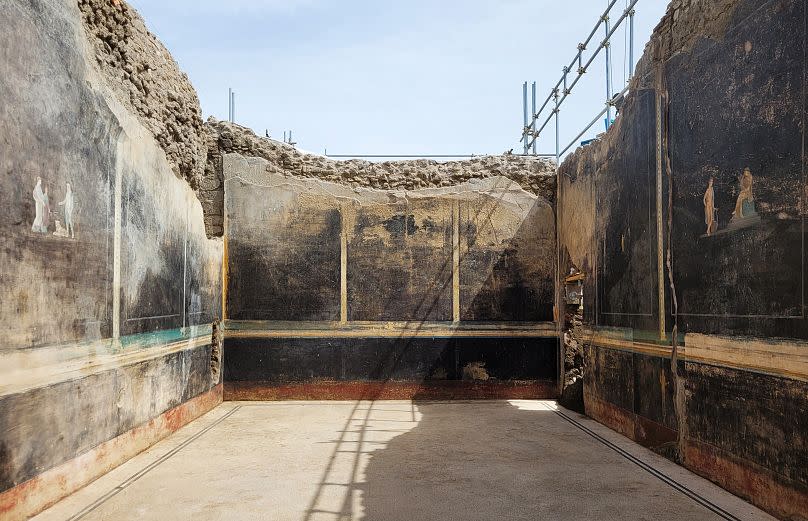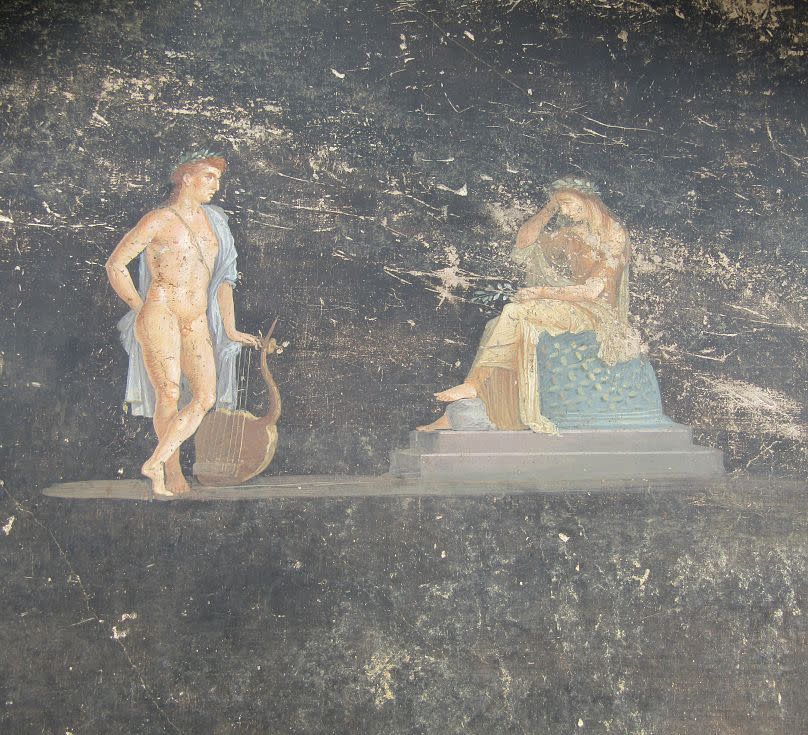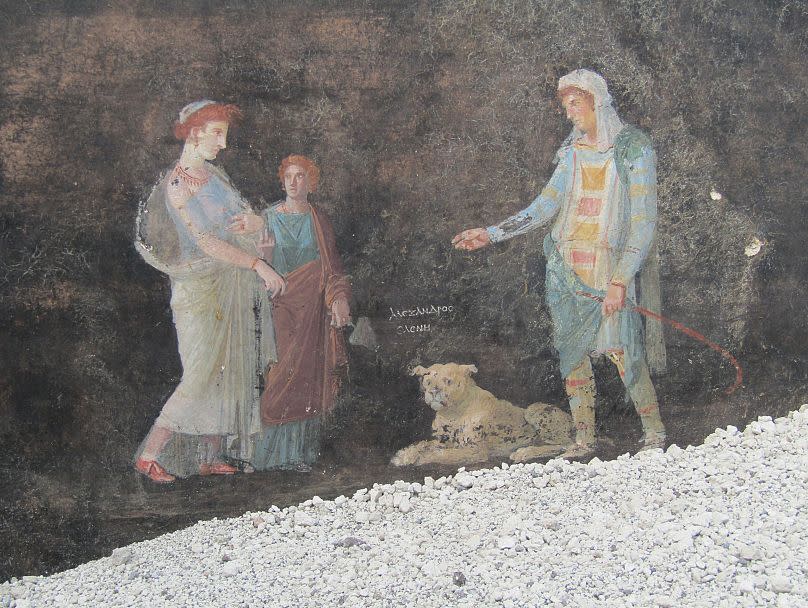Pompeii archaeologists unearth mythological banquet hall with stunning Trojan War frescoes

Archaeologists have unearthed an extraordinary banquet hall, containing stunning frescoes depicting mythological scenes inspired by the Trojan War, among the ruins of Pompeii.
It's been described as one of the most striking discoveries ever made at the archaeological site in the south of Italy.
Measuring approximately 15 metres long by 6 metres wide, the banquet hall's black-painted walls are adorned with well-preserved frescoes and mosaics. In one depiction, Paris, the prince of Troy, faces the Spartan princess Helen. In another scene, Apollo, the Greek god of music and archery, holds a lyre, attempts to allure the Trojan priestess Cassandra.
“Pompeii is truly a treasure chest that never ceases to surprise us and arouse amazement because, every time we dig, we find something beautiful and significant," says the Minister of Culture, Gennaro Sangiuliano.
Pompeii archaeologists unearth disturbing bakery-prison where slaves and donkeys were exploited
Dyeing to remember: Pompeii's ancient textile techniques resurrected in modern day


Experts described the "black room," named for its walls likely meant to conceal soot from oil lamps, as a "refined setting for entertaining during convivial moments."
“The mythological couples provided ideas for conversations about the past, and life, only seemingly of a merely romantic nature,” says Gabriel Zuchtriegel, the director of Pompeii’s archaeological park.
“In reality, they refer to the relationship between the individual and fate: Cassandra who can see the future but no one believes her, Apollo who sides with the Trojans against the Greek invaders, but being a god, cannot ensure victory, Helen and Paris who, despite their politically incorrect love affair, are the cause of the war, or perhaps merely a pretext.”
The banquet hall opens onto a courtyard, likely a service area, with an undecorated staircase leading to the upper floor. Beneath the arches of the staircase, a large pile of construction material was discovered.
Charcoal sketches of two pairs of gladiators and what appears to be a stylised phallus were found on the rough plaster of the arches.

The excavation in insula 10 of Regio IX is part of a broader project aimed at securing the perimeter between excavated and unexcavated areas, improving the hydrogeological layout to ensure the effective and sustainable preservation of Pompeii's extensive heritage, comprising over 13,000 rooms across 1,070 residential units.
So far, the excavation has unearthed two interconnected dwellings, including a house with a bakery and a fullonica (laundry), facing Via Nola. Behind these structures, sumptuously decorated living spaces are emerging, indicating significant renovations prior to the eruption.

